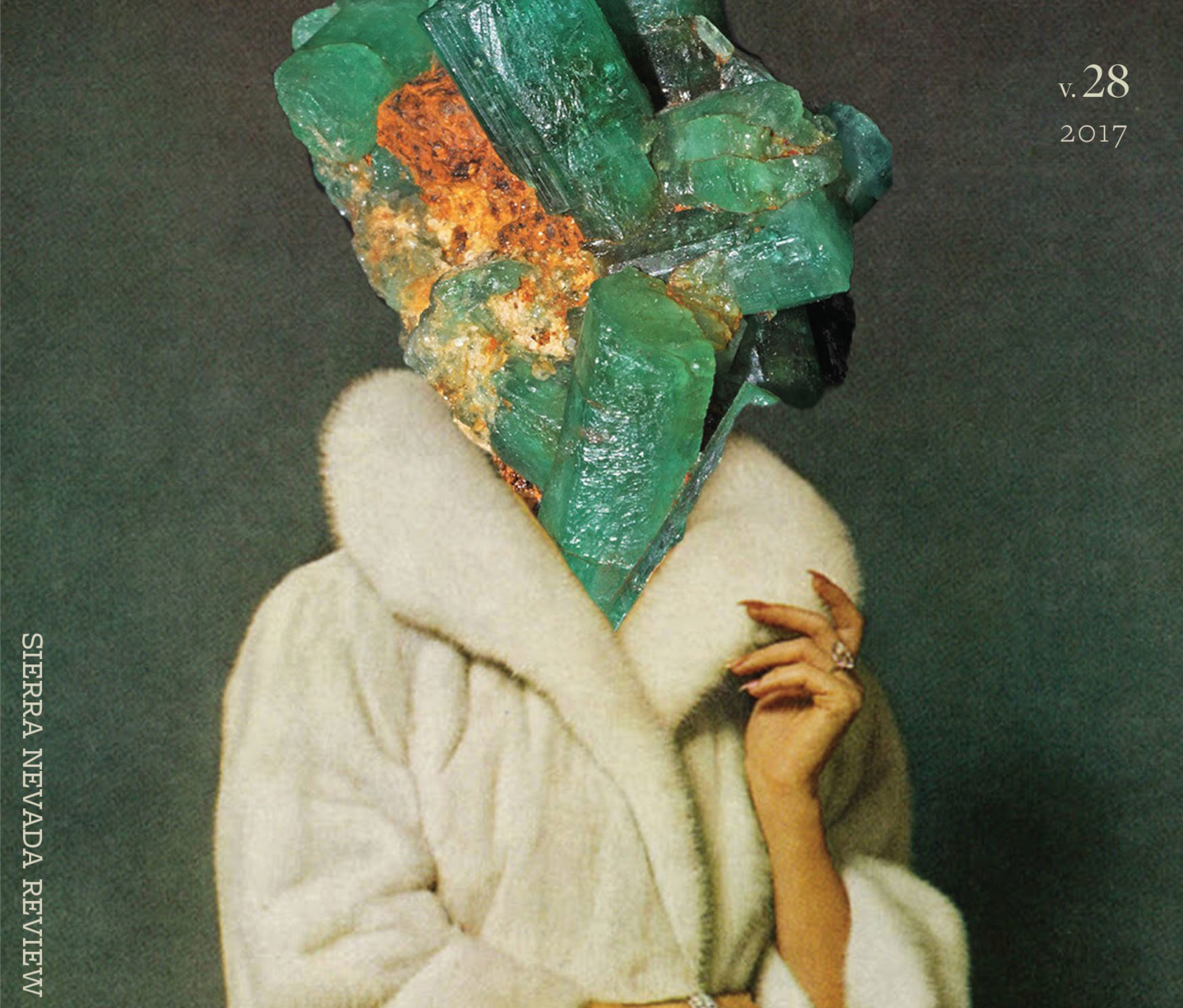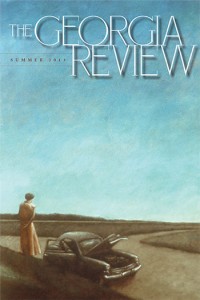by Laurie Macfee
The Georgia Review
Summer 2013
$15.00
Published quarterly by University of Georgia
143 pp. plus front and back matter
ISBN 0016-8386
http://garev.uga.edu/
The Georgia Review has been publishing a cross-section of poetry, fiction, essays, art, and reviews since 1947. Based at University of Georgia, the journal is internationally distributed and published quarterly. It is widely considered one of the finer literary publications in America. At 143 pgs, the Summer 2013 issue packs in eight poems, two fiction pieces, one essay, a painting folio, six book reviews, a note to readers, and most importantly, a special non-fiction feature, Judith Kitchen’s remarkable “Circus Train.”
In editor Stephen Corey’s front piece, To Our Readers, he notes, “During my 30 years with The Georgia Review, the journal has published just a few works that approximate the length of Judith Kitchen’s ‘The Circus Train.’” He queries whether perhaps we need to devise a new category for pieces such as this inventive and moving, “segmented but forcefully interwoven study of memory and mortality,” which is 55 pgs long. The last piece of this length was featured in 1985. For comparison, the environmental essay “Near and Distant Bears,” a treatise on climate change by Scott Russell Sanders, is a mere 12 pgs. The two short fiction pieces, also environmental in nature, come in at 9 pages for David Griffith’s “Blight,” and 10 pgs for Jerry McGahan’s “The Deer Walking Upside Down.”
Why go on about the length of this work? Because what The Georgia Review has allowed with Kitchen’s breath taking, genre-bending reflection on her upcoming death from cancer, is the room to recreate a life. The back and forth segments mimic the waiting for letters (“wings of thought”) to arrive in the mail. “Everything on hold while time crossed the country in its three-hour increments.” The generosity of space allows her to ruminate and build a case for her memories that lap like waves at the edges of our shore:
“…because the only snow is that of memory, and you will miss it acutely with a soft smile as you picture it spreading over the lawns, settling on fences until they carry their burden oh so lightly along their length, the celebration of cardinal or jay as they add their brief glint of color. Soft smile as you step out in boots to scoop up the past, letting it trickle over your face where you lick at its fake confection. Soft smile in perpetual summer twisting your heart where yes you miss snow you miss snow you miss snow.”
This lyric essay alone is reason to purchase the issue, as it will undoubtedly be anthologized for years to come, poetic language building the narrative in sections that fall in and out of focus. It is haunting, and unforgettable. In the end, Kitchen leaves us with this thought: “To conjure the circus train… it must have meant something as it moved across my horizon and vanished into the haze. It must have meant something, because it keeps trailing its scarf of smoke.”
There are only a spare eight poems in this issue. In comparison, The Iowa Review featured 38 poems. I went to several back issues of The Georgia Review, to see if the length of Kitchen’s piece limited the poetry selection but the fall/spring/winter issues only feature 13/14/9 poems each. Seemingly, a breadth of poetry is not the focus (as a poet, it is something I look for). However, this issue begins with a piece by Al Maginnes, which is a mark in the win column. In “Music from Small Towns,” he writes about blue collar boys who, “play their version of a place/that didn’t have a name before it became a song.” Since he opens the journal, Maginnes sets the tone for the entire spread, a melancholy, somewhat wistful narrative on memory. Since I had the great luck to hear him read at SNC last month, I could hear his voice in my ear as I read. Maginnes has such talent in capturing this world.
Other poems that stood out included Jack Ridl’s “Practicing Chinese Ink Drawing,” a lovely moment of re-awakening of an artist to the scene presented in front of him, “my brushstrokes/carry the feel/of listless/luck – languid/and precise….” And even more compelling, was Robert Wrigley’s “16 Down,” about the names for a part of a knife, “choil or ricsasso,” how the speaker fell in love with the words, with the fact that there were multiple ways to talk about the place where the haft disappeared into the handle.
It is refreshing that The Georgia Review includes a section dedicated to art. Paintings by Maine artist John Winship are featured on the covers, and in an 8-pg folio on glossy paper inside. These 10 pieces represent a body of work, Presentiments, for which the managing editor wrote a 2-pg intro to help ground the reader. Based at least partially on Emily Dickinson’s poem of the same name, the work seems to rise out of the “domestically grassy, shady vision of past moments,” that Dickinson mined. The oil and acrylic pieces are Hopperesque in their narrative, single figures or couples caught in a shadowed landscape.
The book reviews included an interesting critique of two new books on film critic Pauline Kael; a review of three new books out in 2013 about the work of Sylvia Plath; a new book on the selected correspondence of Kenneth Patchen; a book of essays and cartoons by Tim Kreider; in a double cameo, a critique of the newest Al Maginnes book “Inventing Constellations;” and a wonderful review by Sian Griffiths of Eric Sasson’s unflinching portraits of gay men’s lives in “Margins of Tolerance.”
Because I count, only two of the eight poets, two of the six book reviewers, and none of the regular essays, fiction, or art are by women in this issue. So, for a body count of the 20 writers/artists listed in the table of contents, only five have a vagina. And of the eight books reviewed, only two were by women. One might imagine that 75% of the writers in the United States are men. But I digress – or do I? The Georgia Review is a lion in the literary world, which is why these numbers are so problematic.
If I had to choose adjectives for The Georgia Review, they would be upstanding, elegant, and safe. Perhaps attempting to represent the best of literary tradition requires choosing more traditional work, taking care not to offend? Besides Judith Kitchen’s piece, none of the work pushes at the edges – this is not a journal intended to shake the status quo. It is lovely and palatable and known, like a Hopper painting. Which is not to say without quality. It has the imprimatur of arrival, a resume-maker if you are emerging. The writers in this issue seem to be established or at least mid-career. It is just too bad that artwork isn’t chosen that pushes as hard as Scott Russell Sanders does on the environment, or as Emily Dickinson pushed at the traditions of her day. Or that more women are seemingly not up to their standard, or part of the literary tradition they cover. Maybe I just picked up a depressingly testosterone-filled issue. It seems like such an old saw at this point, except that it obviously is not. But I would buy this issue for Judith Kitchen’s piece alone – it is worth the expenditure.

